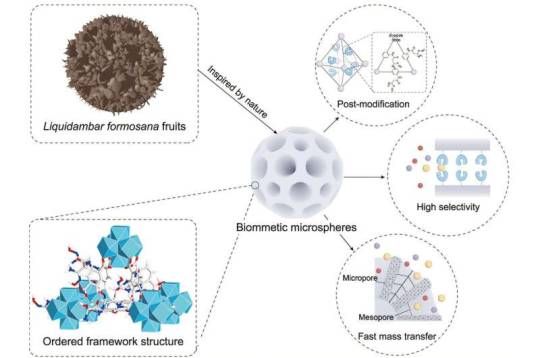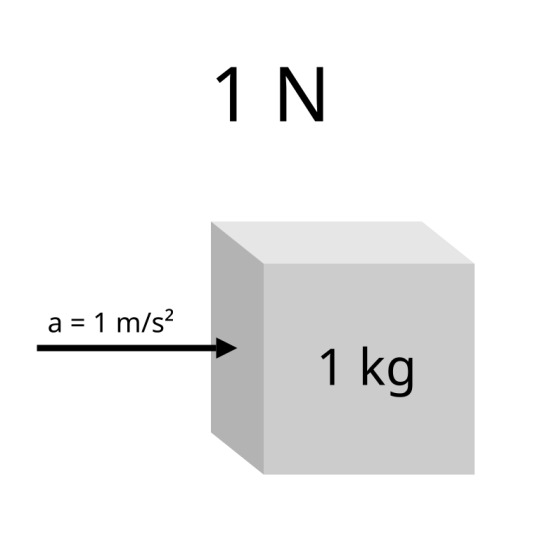Text

Colloidal crystal model reveals new factors in controlling polymorph formation
Polymorphs are not mythical, chimeric beasts—they are substances with identical chemical compositions but differing crystal structures that also exhibit different physical and chemical properties. What this means for practical use, is that companies often want to create a certain polymorph—but not the others. Researchers at Tohoku University took a deep dive into using colloidal crystallization as a model system to figure out how to achieve that fine control over specific polymorph formation. The research is published in the journal Communications Physics. Zoom in on a crystal at a microscopic level, and you'll find that what makes it unique is its highly ordered structure. A colloidal crystal has a similar ordered structure, but with the addition of suspended, submicron-sized particles.
Read more.
8 notes
·
View notes
Text
To date, superlubricity has always been isotropic: the friction is cancelled in all directions equally. Now, with this new discovery, a new form of superlubricity is achieved, where the friction is zero in one direction only, and has conventional friction in other directions.
40 notes
·
View notes
Text

Hybrid surface combines hydrophobic nanowires and hydrophilic channels to prevent condensation flooding
Condensation is critical for applications like power generation, water harvesting, and cooling systems. However, traditional surfaces suffer from a drop in performance under high subcooling, when the surface temperature is much lower than the surrounding vapor. This leads to water flooding and reduced heat transfer. To tackle this long-standing challenge, researchers at National Taiwan University and National Chung Hsing University have developed a novel three-dimensional (3D) hybrid surface that significantly enhances condensation performance and avoids flooding, even at high subcooling. The paper is published in Small Structures. The new surface integrates short hydrophobic nanowires and hydrophilic microchannels in a structured pattern. This combination helps guide water droplets efficiently off the surface, preventing the accumulation of water that typically hampers heat transfer.
Read more.
5 notes
·
View notes
Text

Advanced tungsten-based ceramics achieve high hardness and ablation resistance
A research team successfully synthesized tungsten carbide (WC) and tungsten boride (WB2) ceramics with excellent mechanical properties and ablation resistance. These findings were published in the journal of Ceramics International and Journal of the European Ceramic Society. The team was led by Prof. Huang Zhulin at the Institute of Solid State Physics, the Hefei Institutes of Physical Science of the Chinese Academy of Sciences, Ultrahigh temperature ceramics (UHTCs) are essential materials for thermal protection systems with high melting points and excellent stability. Tungsten-based UHTCs offer excellent resistance to heat and radiation. However, they have faced several challenges in practical applications, such as difficulty in achieving high density during processing, grain coarsening during sintering, and limited oxidation and ablation resistance.
Read more.
9 notes
·
View notes
Text

High-tech sticker can identify real human emotions
Saying one thing while feeling another is part of being human, but bottling up emotions can have serious psychological consequences, such as anxiety or panic attacks. To help health care providers tell the difference, a team led by scientists at Penn State has created a stretchable, rechargeable sticker that can detect real emotions—by measuring things like skin temperature and heart rate—even when users put on a brave face. The researchers recently unveiled the wearable patch that can simultaneously and accurately track multiple emotional signals in a study published in the journal Nano Letters. "This is a new and improved way to understand our emotions by looking at multiple body signals at once," said Huanyu "Larry" Cheng, the James L. Henderson, Jr. Memorial Associate Professor of Engineering Science and Mechanics at Penn State and lead author of the paper.
Read more.
11 notes
·
View notes
Text

Plants over plastics: Researchers create biodegradable cellulose-based packaging
Researchers at Virginia Tech have found a way to make biodegradable packaging stronger while using less energy in the process. The research team from the College of Agriculture and Life Sciences and the College of Natural Resources and Environment developed a low-pressure treatment that improves plant-based packaging materials. This discovery could help companies move away from plastic without sacrificing strength or durability. "Petroleum-based plastics have long been the mainstay of packaging applications," said Haibo Huang, associate professor in the Department of Food Science and Technology. "However, their persistence in the environment has led to increased concerns about 'white pollution.' Biodegradable packaging materials are gaining interest as alternatives, but they often struggle to match the performance properties of petroleum-based plastic."
Read more.
41 notes
·
View notes
Text

Glowing gunshot residue: New method illuminates crime scene clues
Crime scene investigation may soon become significantly more accurate and efficient thanks to a new method for detecting gunshot residues. Researchers from the groups of Wim Noorduin (AMOLF/University of Amsterdam) and Arian van Asten (University of Amsterdam) developed the technique that converts lead particles found in gunshot residue into light-emitting semiconductors. This method is faster, more sensitive, and easier to use than current alternatives. Forensic experts at the Amsterdam police force are already testing it in actual crime scene investigations. The researchers published their findings in Forensic Science International on March 9. Gunshot residue clues The innovative light-emitting lead analysis method offers exciting opportunities for crime scene investigations. When a weapon is fired, it leaves gunshot residue containing lead traces on the surrounding environment, including clothing and skin.
Read more.
16 notes
·
View notes
Text

Infrared heavy-metal-free quantum dots deliver sensitive and fast sensors for eye-safe LIDAR applications
The frequency regime lying in the shortwave infrared (SWIR) has very unique properties that make it ideal for several applications, such as being less affected by atmospheric scattering as well as being "eye-safe." These include Light Detection and Ranging (LIDAR), a method for determining ranges and distances using lasers, space localization and mapping, adverse weather imaging for surveillance and automotive safety, environmental monitoring, and many others. However, SWIR light is currently confined to niche areas, like scientific instrumentation and military use, mainly because SWIR photodetectors rely on expensive and difficult-to-manufacture materials. In the past few years, colloidal quantum dots—solution-processed semiconducting nanocrystals—have emerged as an alternative for mainstream consumer electronics.
Read more.
10 notes
·
View notes
Text

Biomimetic adsorbent efficiently extracts uranium from seawater
The oceans hold an enormous amount of very diluted uranium that could potentially serve as a sustainable fuel source for nuclear power. But how can uranium be extracted quickly and efficiently from seawater? Balancing high selectivity for uranium ions with rapid transport of those ions has long been a major challenge in obtaining uranium from the sea. Now a groundbreaking study suggests a solution. A research team led by Prof. Wen Liping from the Technical Institute of Physics and Chemistry of the Chinese Academy of Sciences has developed a biomimetic adsorbent that can attract and hold uranium ions. The inspiration for this adsorbent is the natural porous structure of the spiky, globular fruit of the Chinese sweetgum tree, Liquidambar formosana. The team's findings were recently published in Matter.
Read more.
12 notes
·
View notes
Text

Thermal Diffusivity
Thermal diffusivity is defined as the ratio of a materials thermal conductivity to its density and specific heat capacity. This unit, often represented as the lowercase Greek letter alpha represents how fast heat moves through a material; the above formula gives units of length squared per time.
Sources/Further Reading: (Image source - Thermal Engineering) (Mech Content) (Wikipedia)
42 notes
·
View notes
Text

Biomass-based polymer can capture and release CO₂ without high pressure or extreme temperatures
A new, biomass-based material developed by FAMU-FSU College of Engineering researchers can be used to repeatedly capture and release carbon dioxide. The material is primarily made from lignin, an organic molecule that is a main component of wood and other plants, and it can take up carbon dioxide (CO2) from concentrated sources or directly from the air. The research appears in Advanced Materials. "The beauty of this work is the ability to precisely control the capture and release of CO2 without high pressure or extreme temperatures," said study co-author Hoyong Chung, an associate professor in the FAMU-FSU College of Engineering. "Our testing showed that this material's structure stayed the same even after being used multiple times, making this a promising tool for mitigating carbon emissions."
Read more.
15 notes
·
View notes
Text

SI Derived Units: Force, Weight, and the Newton
One of the twenty-one derived SI units with its own name, the newton was standardized in 1946 as part of the MKS unit system, what would later serve as the basis for SI units. It is named for the English physicist Sir Isaac Newton and is a measure of the amount of force, or interactions that change the motions of objects. (Weight is a specific type of force related to gravity.) It is derived from acceleration (units of length per time squared) and mass and one newton is thus equal to one kilogram meter per second squared.
Mathematically, the newton is represented by the capital letter N. Force is typically represented in equations by a capital F and weight by a capital W. Comparing to other unit systems, one newton is equivalent to 10^5 dyn (in the CGS system) or approximately 0.225 pounds-force (in Imperial units). Because force is a vector, a negative force is possible but merely indicates the direction of the force based on the coordinate system given.
Sources/Further Reading: (Image source - Newton Wikipedia) (Force Wikipedia) (Weight Wikipedia) (Metric System) (Boston University) (LibreTexts)
19 notes
·
View notes
Text

Maxwell Relations
In the field of thermodynamics, equations derived from the definitions of thermodynamic potentials, and derivable from the symmetry of second derivatives, are known as Maxwell potentials. The four most common Maxwell relations relate the second derivatives of internal energy, enthalpy, Helmholtz free energy, and Gibbs free energy, to the derivatives involving temperature, pressure, volume, and entropy. The Maxwell relations allow scientists to substitute equivalent partial derivatives when one is more convenient than another (if, for example, one knows temperature and volume but not pressure, etc.).
Sources/Further Reading: (Image source - Wikipedia) (LibreTexts) (Blog post) (UC Irvine)
50 notes
·
View notes
Text

Researchers develop eco-friendly nanoparticles from plant waste
Researchers at the University of Chemistry and Technology in Prague have successfully synthesized bimetallic nanoparticles using waste extracts from Cannabis sativa and Vitis vinifera, showcasing an eco-friendly approach with potent antimicrobial properties. The work is published in the journal RSC Advances. In the quest for sustainable solutions, this research focused on the green synthesis of nanoparticles, emphasizing the valorization of plant waste. "Our study aims to contribute to a circular economy by transforming agricultural waste into valuable materials," stated Jana Michailidu, the corresponding author of the study.
Read more.
16 notes
·
View notes

